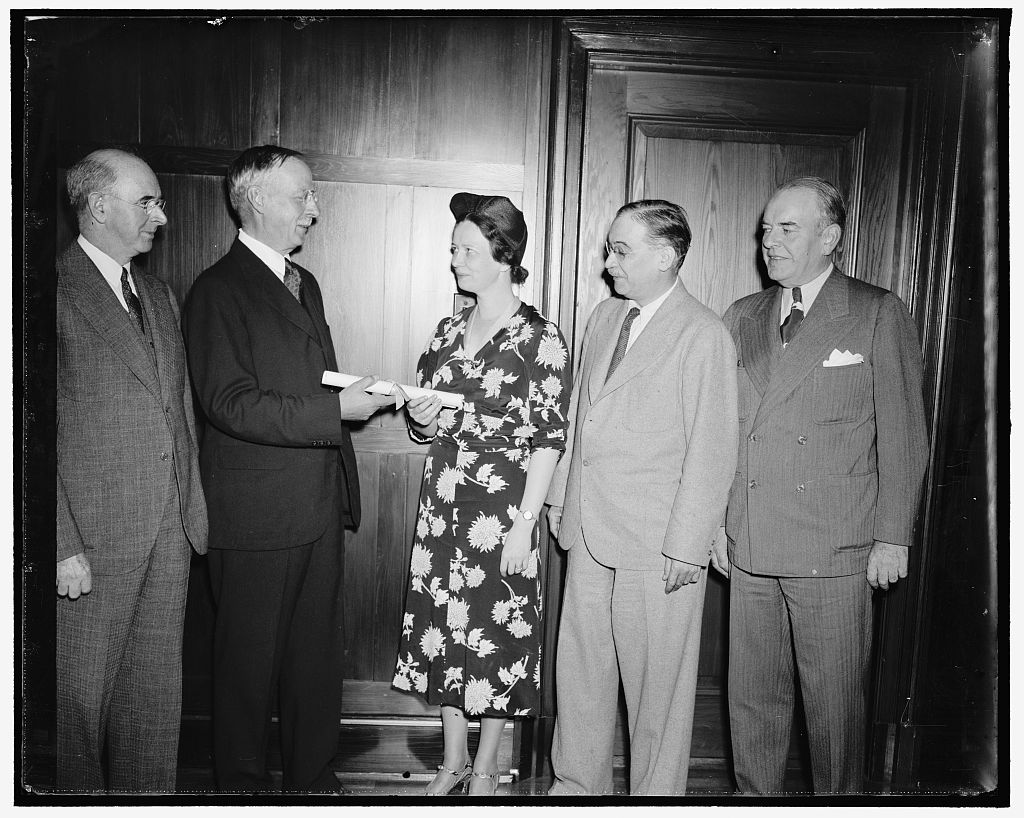Results for "Earth From Outer Space (Television program)"

Archives Puzzles: Shine Bright Like a Halide
- Date: January 11, 2021
- Creator: Emily Niekrasz
- Description: Have a little fun with images from our collections that have been designated as open access. Anyone can now download, transform, share, and reuse millions of images as part of Smithsonian Open Access.
Connecting Teens and the Castle
- Date: April 25, 2017
- Description: A quick look inside the development of a teen-centric program/experience at the Smithsonian Castle.

Link Love: 9/27/2013
- Date: September 27, 2013
- Creator: Mitch Toda
- Description: Link Love: a weekly blog feature with links to interesting videos and stories regarding archival issues, the Smithsonian, and history.

I.D. This! Parchment
- Date: November 21, 2019
- Creator: William Bennett
- Description: For the next installment in our I.D. This! series, learn about parchment and how we identify it in our collections.

International Travels of the Australian Canis Dingo: Part II
- Date: June 15, 2017
- Description: The cultural history of the Australian dingo and the species’ connection to the National Zoo.

Science Service, Up Close: Patent Parades, Silk Purses, and Snake Bite Remedies
- Date: March 30, 2017
- Creator: Marcel Chotkowski LaFollette
- Description: Everyone loves a parade – especially one followed by a banquet. When scientists and politicians met in Washington, D.C., on November 23, 1936, to celebrate the centennial of the U.S. patent system, they listened first to a conventional program of speeches. Then, in the afternoon, Science Service director Watson Davis arranged something different: a “Research Parade” featuring
- Blog Post
Mapping the Moon
- Date: May 19, 2009
- Description: Though photographs are accepted as subjective but ultimately faithful visual reproductions of reality, in many instances they don’t correspond to our experience. Pupils don’t regularly glint red, and people don’t transform into the streaked, evanescent smears we so often witness in photos. Yet we have no trouble accepting these inconsistencies, knowing that taking a picture of
- Blog Post
Science Service, Up Close: Of Princes, Princesses, and Science
- Date: June 12, 2018
- Creator: Marcel Chotkowski LaFollette
- Description: As editor E. E. Slosson began setting up the Science Service news office, his mail was flooded with inquiries from potential contributors. Writers and photographers described their accomplishments and submitted samples of their work. One such letter, from Albert Harlingue on April 13, 1921, must have piqued Slosson’s interest, for it coincided with the Washington visit of “a
- Blog Post
The Family of Man, as Told by the Family of Man
- Date: September 20, 2011
- Creator: Marvin Heiferman
- Description: Periodically—given the fleeting nature of life and the ubiquity of photographic imagery—it’s seems like someone’s always trying to hatch another ambitious image-based cultural project to prove that, despite our differences, we’re pretty all much the same.

17 Objects for 170 Years (Happy Birthday to us!)
- Date: August 10, 2016
- Creator: Effie Kapsalis
- Description: On the Smithsonian's 170th birthday, here are 17 stories of how items have made their way to our collections!

Finding Lucile Mann: Tropical Fish and Zoological History
- Date: March 11, 2021
- Description: While Lucile Mann’s contributions to zoological history have often been reduced to her work raising infant animals, her work with the National Zoo and resulting publications demonstrate that her legacy should be reexamined.
- Blog Post
Stellar Evolution: A Journey with Chandra
- Date: April 25, 2012
- Description: The Chandra X-ray Observatory explains the origins of recently added image of stellar evolution to the Smithsonian Flickr Commons stream.
